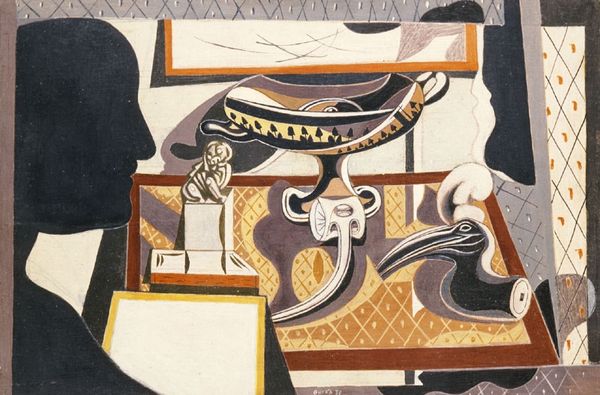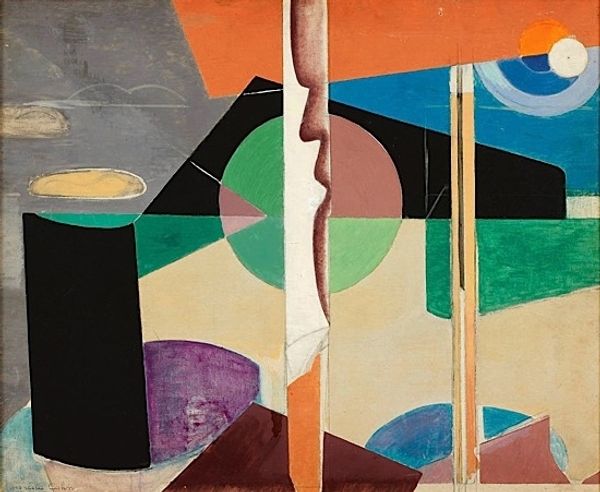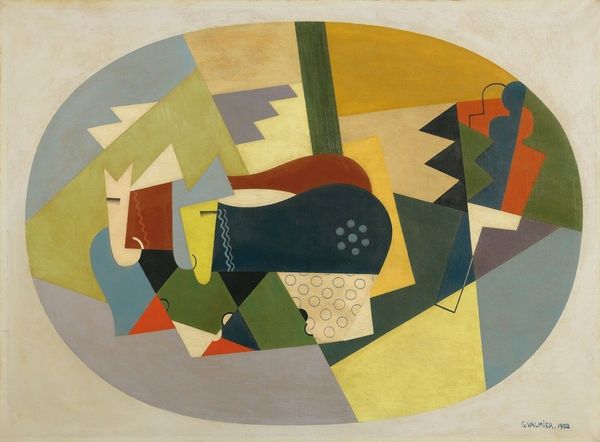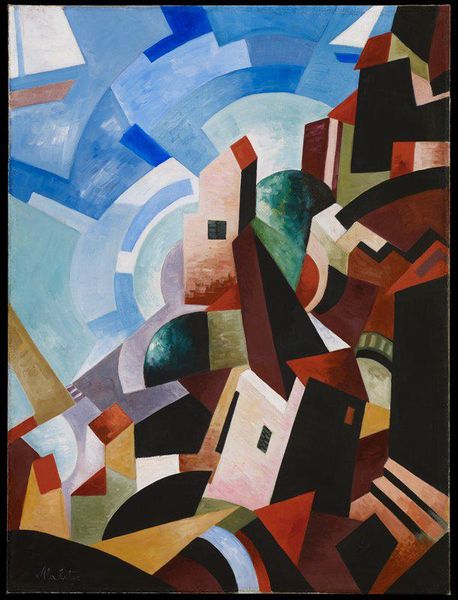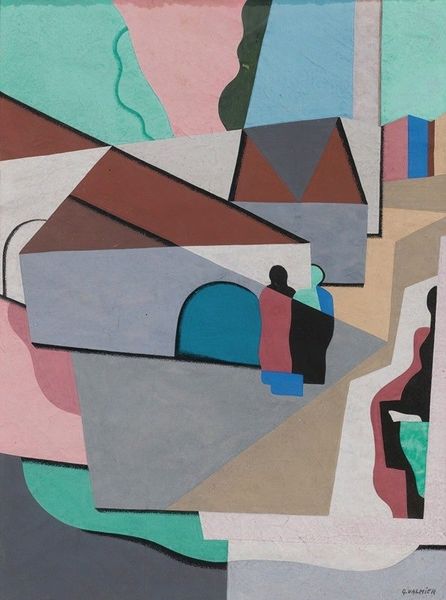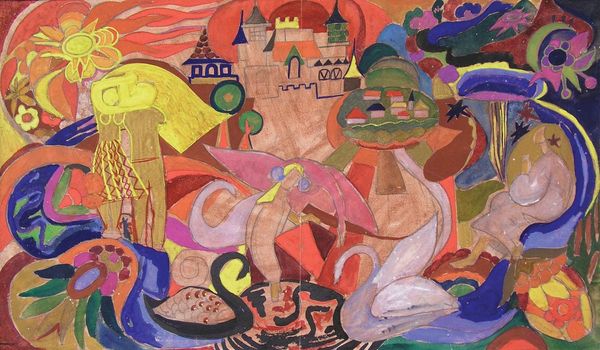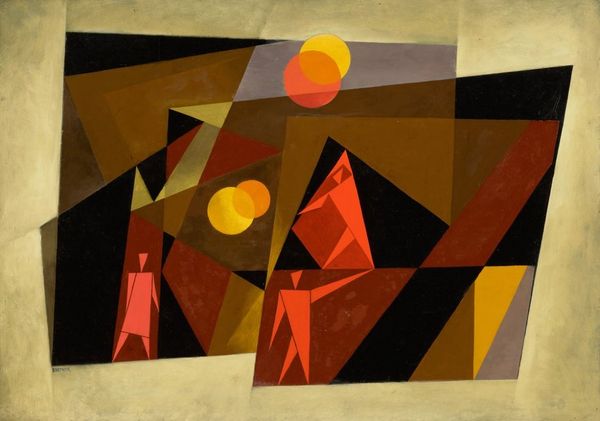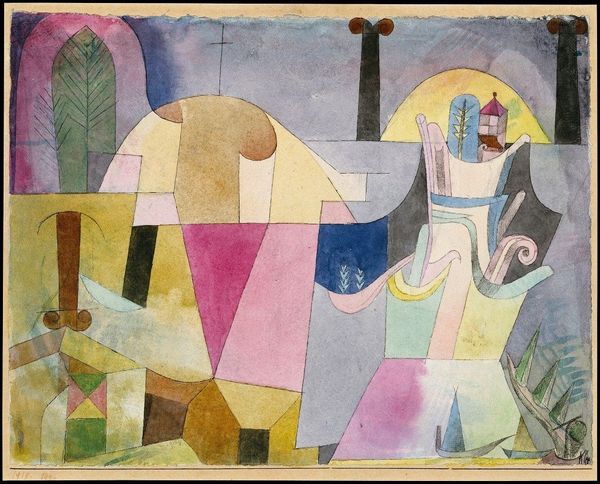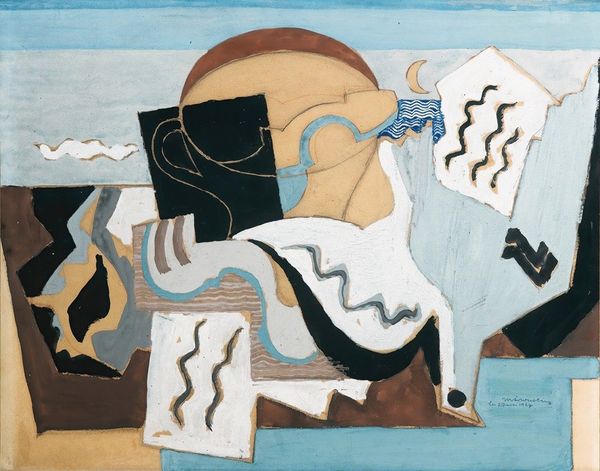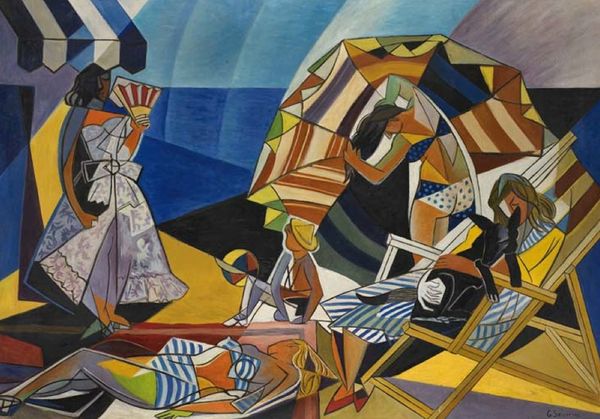
painting, oil-paint
portrait
art-deco
cubism
painting
oil-paint
landscape
nude
Editor: Here we have Gustave Buchet's "Nu et composition," painted in 1929. It’s an oil painting featuring a nude figure within a Cubist-Art Deco landscape. What strikes me is the almost theatrical staging, and the stylized forms of everything. How do you see this piece? Curator: For me, this work highlights a fascinating dialogue between materials, production, and the social context in which it was created. Buchet uses oil paint – a traditionally "high art" medium – to depict a subject (the nude) within a style (Cubism/Art Deco) that’s actively dismantling classical representation. Look at how he flattens the picture plane. Does that choice emphasize the materials or de-emphasize them? Editor: I guess it emphasizes them in a way because you’re aware it’s paint on a flat surface, not trying to trick you into seeing depth. And the simplified forms… they’re almost like mass-produced objects themselves. Curator: Exactly! Consider the broader social context of the 1920s: mass production was transforming society. Art Deco itself was heavily influenced by industrial design. Buchet, perhaps subconsciously, acknowledges this shift. Are we meant to see the body, landscape, and even the dog, as commodities within a new, mechanized world? He doesn't shy away from flattening form, denying it conventional modeling to call attention to its means of representation, it challenges conventional art hierarchies by bringing together nude figure with abstraction and elements that feel almost manufactured. Editor: So, it's not just a pretty picture, but a statement about the changing world and how art is made and consumed? Curator: Precisely. By analyzing the materials, techniques, and the broader social environment, we gain a richer understanding of the artwork’s meaning and intent, even if unintended. Editor: I never thought about it that way, focusing on the actual materials and the process. That changes how I’ll look at art from now on. Curator: Excellent! Always ask how and why something was made and how the conditions around production contribute to our viewing experience.
Comments
No comments
Be the first to comment and join the conversation on the ultimate creative platform.
